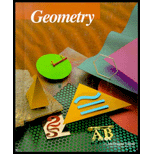
To construct: an
Explanation of Solution
Given Information construct an angle
Construction:
The following steps are to be followed for constructing an angle of
a. Construct a line segment ST of some definite length (say 5 cm).
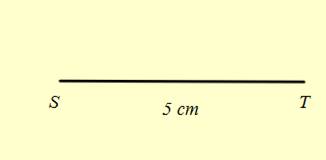
b. Now, using a compass and taking point S as the center and radius being equal to the measure of
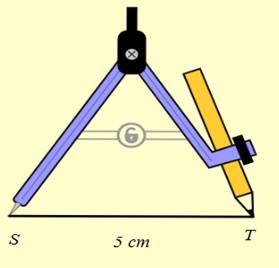
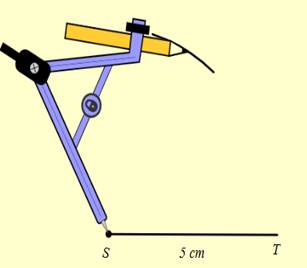
c. Now, with T as center and the same radius, draw an arc which meets the first arc at point R. Joining the points R and S gives the line segment RS and the angle
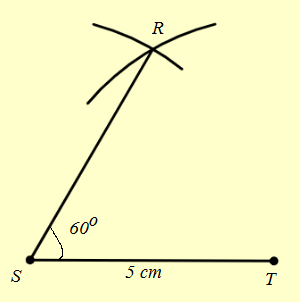
d. Having constructed the given angle, draw an arc with S as center and any radius to meet RS and ST at B and A, respectively.
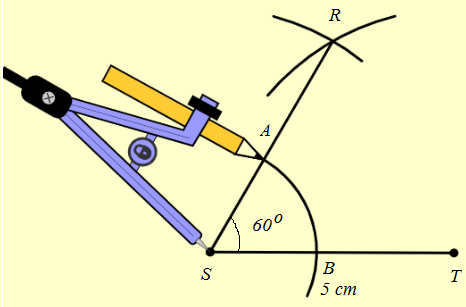
e. Now, using a compass, with A as center and any radius, draw an arc as shown below. Repeat the same process for point B to meet the first arc at point Q.
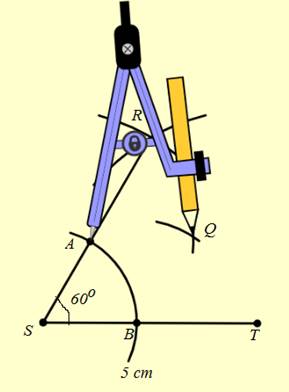
f. The line
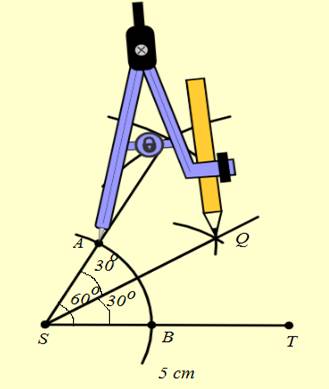
g. The obtained construction can be verified by using a protractor as below. The angle
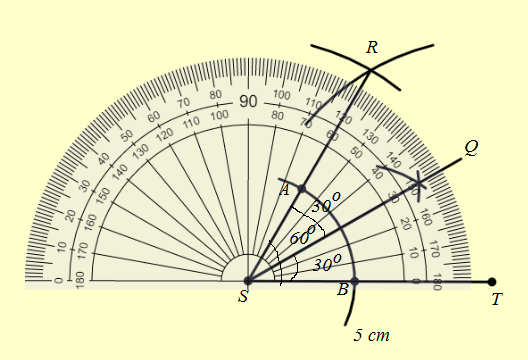
Chapter 10 Solutions
McDougal Littell Jurgensen Geometry: Student Edition Geometry
Additional Math Textbook Solutions
Basic Business Statistics, Student Value Edition
Elementary Statistics (13th Edition)
A First Course in Probability (10th Edition)
 Elementary Geometry For College Students, 7eGeometryISBN:9781337614085Author:Alexander, Daniel C.; Koeberlein, Geralyn M.Publisher:Cengage,
Elementary Geometry For College Students, 7eGeometryISBN:9781337614085Author:Alexander, Daniel C.; Koeberlein, Geralyn M.Publisher:Cengage, Elementary Geometry for College StudentsGeometryISBN:9781285195698Author:Daniel C. Alexander, Geralyn M. KoeberleinPublisher:Cengage Learning
Elementary Geometry for College StudentsGeometryISBN:9781285195698Author:Daniel C. Alexander, Geralyn M. KoeberleinPublisher:Cengage Learning

